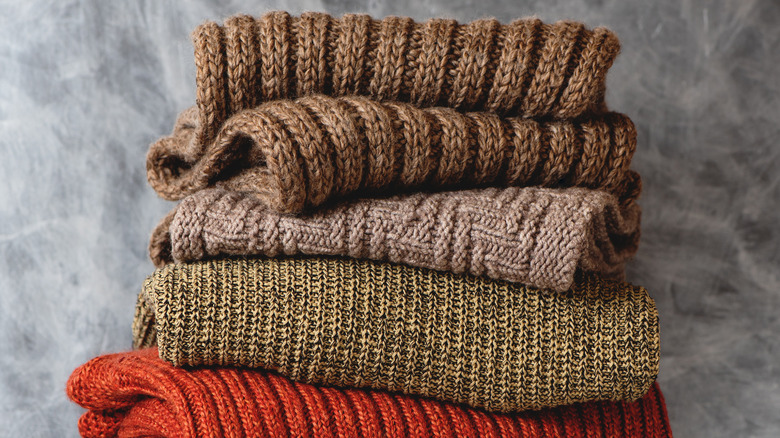When it comes to nature, trees are the leaders of the forest. Whether they are in your yard or in a park, they symbolize strength, stability, and protection. Beyond the trees themselves, what you put on them can also be symbolic. For instance, many times ribbons are tied to trunks or branches to offer support for causes, and this is most often done for trees outside of private homes. Pink ribbons offer support for those with breast cancer, while orange ribbons support those with leukemia and multiple sclerosis. However, sometimes, items are tied to trees for practical uses instead. The meaning behind a scarf on a tree is not symbolic. Instead, it is a useful way to offer protection from the cold for those that need it.
There are plenty of practical reasons why something may be tied to a tree. For example, if you see a white ribbon on a tree or a painted X, it may be a marking that the tree will be taken down. Another example is if you see a tree wrapped in metal, as this is used to keep critters from damaging it. Finding a scarf tied to a tree is also practical, as it provides an immediate use. Many tie these comfy items to trunks or branches so that anyone who walks by and needs the accessory to stay warm can take it.
Scarves around trees are meant to be worn

When you see scarves tied around trees, they usually are not symbolic at all but instead a useful gift for those in need. It is the most likely scenario, especially if the tree is in a public space. In many communities, people tie scarves (and sometimes hats, gloves, or other warm items) to trees as a way to offer them to those who may be experiencing homelessness or struggling with the cold. Sometimes the scarves are left on fences as well, particularly when there are many of them available.
According to The U.S. Department of Housing and Urban Development, the number of people experiencing homelessness rose by 12% between 2024 and 2024, reaching roughly 653,100 people on any given night. Therefore, this simple act of kindness could be useful for lots of people in many communities around America. While tying scarves to trees or fences is often done by individuals in their own communities, there are also organizations that tie scarves to trees as well. For instance, the group The Wrap Up, Project collects crocheted and knitted scarves from people who want to donate the items to help keep people warm during the cold winter in Pennsylvania and puts them in public spaces for those in need.
How to give scarves to those who need them

Before you tie a scarf to a tree in your area, first make sure you aren’t impinging on any private property. Similarly, if you leave a scarf in a public park, make sure that it’s allowed. Of course, you can leave scarves on any trees on your own property. Those lining your sidewalk will naturally get more foot traffic, which will allow more people to stumble upon them. It helps to make it clear that your scarf is not lost and is meant to be taken. To do this, you could add a note that encourages anyone who needs the accessory to take it. Write something such as “Please take this if you can use it” or simply “Free — please take and enjoy”.
If you want to leave a scarf but don’t know where to do it, reach out to a local organization that knows where the need is the greatest. For instance, the national nonprofit organization Warm Up America! collects and distributes scarves, as well as other clothes and blankets, to agencies around the country. Also, if you see trees in your neighborhood with scarves wrapped around them, you can inquire if you can also join the effort or even start a neighborhood group.



